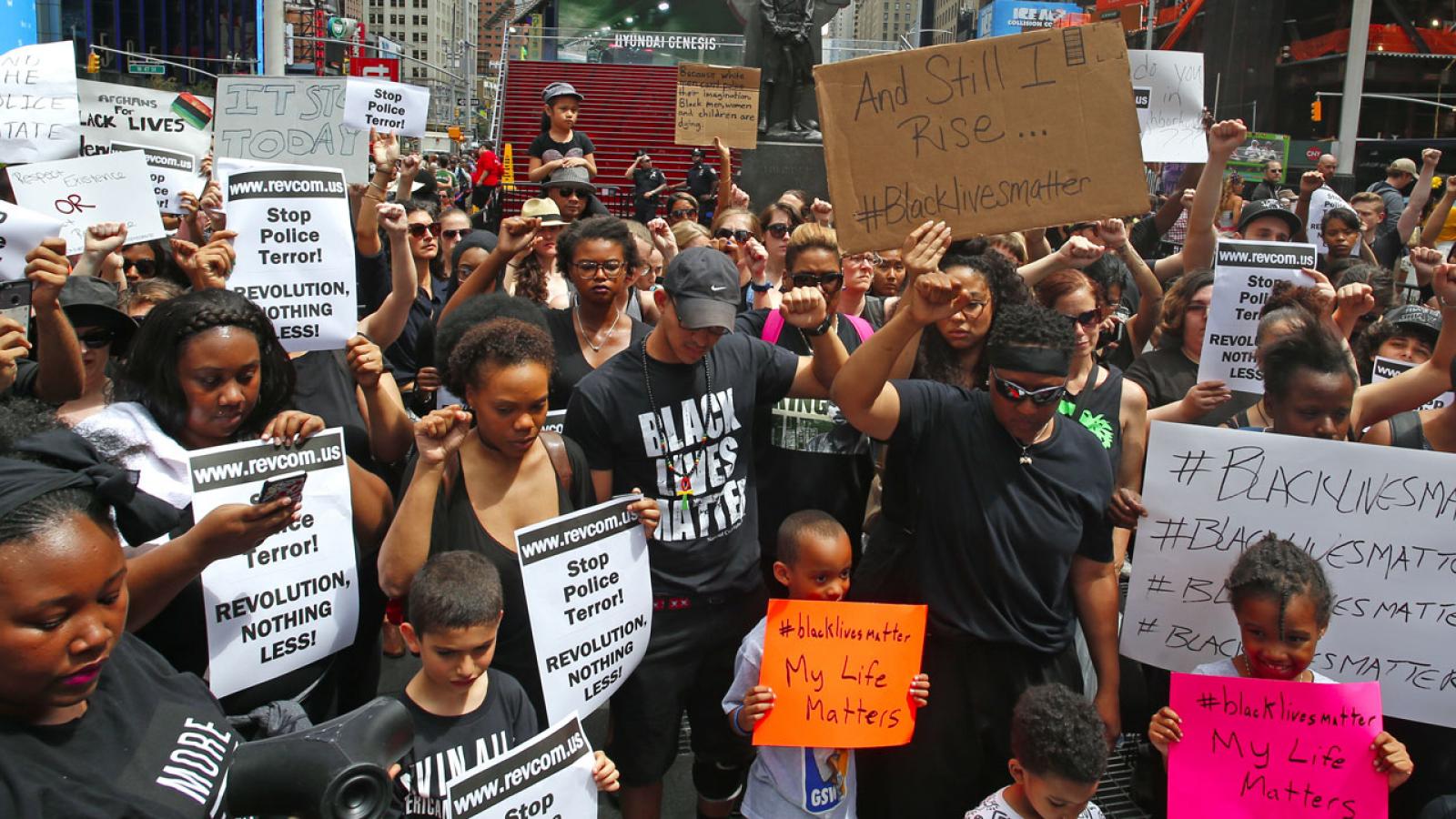Barack Obama: Foreign Affairs
Iraq and Afghanistan
In addition to inheriting an economy in crisis when he took office, President Obama inherited two wars, one in Iraq and the other in Afghanistan. An early opponent of President George W. Bush’s decision to invade Iraq in 2003, Obama promised during the 2008 election campaign to withdraw American troops as soon as possible. In February 2009, he announced a plan to bring troop levels down from 160,000 to 50,000 by August 2010, including the removal of all combat forces. The remaining troops, he added, would be withdrawn by the end of 2011. For several years, the withdrawal proceeded smoothly, in part because Obama was able to build on the gains achieved by Bush's “surge” of 20,000 additional troops in 2007, which had helped the government of Iraq to restore a measure of stability to the country. By 2012, only 150 American troops were in Iraq, a number that remained level for about three years.
Obama’s other war-related campaign promise was to step up the US military commitment in Afghanistan in order to keep the extremist Taliban regime from regaining power and allowing al Qaeda once again to use the country as a base of terrorist operations against the United States and its allies. Soon after taking office, Obama granted the military’s request, initially made at the end of the Bush presidency, to send an additional 21,000 troops to Afghanistan, raising the American military presence there to about 60,000.
As his first year as president unfolded, however, Obama became convinced that a change in military strategy was needed so that the government of Afghanistan eventually would be able to defeat the Taliban on its own. In June, he appointed a new military commander, General Stanley McChrystal, and asked him to recommend a new course of action. McChrystal requested 40,000 more troops and promised to deploy them to train Afghan forces to fight the Taliban instead of relying on American might. After an extended series of meetings beginning in September, Obama announced in a speech on December 1, 2009, at West Point that he had approved a short-term surge of 33,000 troops with a proviso that American forces must begin to withdraw from Afghanistan in July 2011. The president soon fired McChrystal for making disparaging remarks about members of the administration, and he replaced him with General David Petraeus, who had developed and implemented the successful surge in Iraq that inspired McChrystal's new strategy for Afghanistan.
After the 2010 midterm elections, congressional Republicans were much more interested in domestic policy than foreign policy, which allowed President Obama to accomplish a complete disengagement of US forces, at least in terms of active combat, from Afghanistan by 2014. The number of American troops in Afghanistan, which peaked at 97,000 in 2011, declined steadily to about 12,000 in 2015 before leveling off at that figure as the president reluctantly acknowledged that the campaign to defeat the Taliban was not yet won. Buttressing Obama’s credentials on military matters was the May 2, 2011, killing of al Qaeda’s leader, Osama bin Laden, by a team of Navy SEALS. Intelligence agencies had concluded that bin Laden was probably hiding in a residential compound near Abbottabad, Pakistan. Lacking certainty on the matter, and realizing the risks attending a military strike, Obama nonetheless ordered the attack, which was successful. In celebrating bin Laden's death, Americans applauded the president's decisiveness and judgment.
Even after United States soldiers killed bin Laden in May 2011 and began disengaging from Iraq and Afghanistan, the president expanded the strategic deployment of special forces and drones in a “secret war” against suspected terrorists. (Drones are remotely controlled, unpiloted aircraft that conduct surveillance and drop precision-targeted bombs.) Moreover, the White House joined with NATO to help Libyan rebels end the reign of dictator, Colonel Muamar el-Qaddafi. The administration argued that the War Powers Resolution, which requires the president to report to Congress when he deploys American forces, did not apply because a state of “hostilities” did not exist.
Obama and his national security team claimed that they were using a new approach to war that relied on multinational rather than unilateral action, and surgical air and Special Forces strikes rather than on massive troop deployments. The administration’s reliance on bombing rather than ground troops in Libya, however, deprived it of any means to reduce the chaos that ensued after Qaddafi was killed. One unfortunate consequence was a radical mob attack on the US diplomatic compound in Benghazi, Libya, in which four American officials were killed.
Syria and ISIS
During the first year of his second term, President Obama seemed determined to take the United States off a “perpetual war footing.” Sensing the country’s war fatigue and noting resistance from both Democrats and Republicans to additional commitments in the Middle East, the president decided not to launch missile strikes in Syria in support of rebels fighting the autocratic regime of Bashar al-Assad, even though the brutal dictator had crossed Obama’s stated “red line” by using chemical weapons against civilians. Calling off a planned air attack on Syria at virtually the last minute, Obama decided to refer the matter to Congress, which had little interest in endorsing his proposed course. A few days later, Obama accepted Russian leader Vladimir Putin’s offer to persuade Syria to get rid of its chemical weapons.
 With the dramatic rise of a radical group that declared itself the Islamic State during the fall of 2014, however, presidential forbearance gave way to a more muscular new course in the Middle East. The Islamic State, known by most as ISIS but, somewhat idiosyncratically referred to as ISIL by the president, was a former al Qaeda affiliate that took advantage of the civil war in Syria and the lassitude of the Iraq government to gain territory on both sides of the Iraq–Syria border.
With the dramatic rise of a radical group that declared itself the Islamic State during the fall of 2014, however, presidential forbearance gave way to a more muscular new course in the Middle East. The Islamic State, known by most as ISIS but, somewhat idiosyncratically referred to as ISIL by the president, was a former al Qaeda affiliate that took advantage of the civil war in Syria and the lassitude of the Iraq government to gain territory on both sides of the Iraq–Syria border.
As the president acknowledged, his administration underestimated the danger of ISIS’s incursions into Syria and Iraq; indeed, Obama initially dismissed these fighters as a “JV team.” But the steady advance of the self-proclaimed Caliphate and the powerful public reaction to ISIS’s release of videos that graphically showed the beheading of two American journalists spurred the President to action. In a September 10, 2014, speech to the nation, Obama announced a plan to “degrade, and ultimately destroy, ISIL through a comprehensive and sustained counterterrorism strategy.” Two weeks later, soon after ordering air strikes on dozens of ISIS targets in Syria, the president issued an even more militant call to arms against the self-described Islamic State in an address to the General Assembly of the United Nations. The number of American troops in Iraq with a mission to help fight ISIS rose to more than 5,000 by 2016, and his administration conducted more than 10,000 air strikes against the radical organization.
Although the air strikes in Syria had strong bipartisan support, constitutional and partisan issues lurked just beneath the surface. In his speech to the nation, Obama said he “welcomed congressional support for this effort,” yet insisted he had “the authority to address the threat from ISIL.” That authority, he claimed, resided in the resolution Congress passed in 2001 authorizing President George W. Bush to use military force against those “who planned, authorized, committed or aided” in the September 11 attacks. The White House argued that the resolution covered a war on ISIS because the terrorist organization is “the true inheritor of Osama bin Laden’s legacy—notwithstanding the recent public split between al Qaeda’s senior leadership and ISIS.”
The president took pains to ensure that the battle against ISIS would be different from the wars in Iraq and Afghanistan because it “would not involve American combat troops fighting on foreign soil.” Yet the military action involved not just “a systematic campaign of airstrikes” but the deployment of additional troops “to support Iraqi and Kurdish forces with training, intelligence, and equipment.” Notwithstanding the strong public sentiment to strike back against ISIS’ atrocities, the failure of Congress to place limits on a new Middle East mission renewed concerns about executive power.
Legal and constitutional issues aside, the situation on the ground in Iraq and, especially, Syria remained troubled at the end of Obama’s tenure as president. Nightmarish instability in Syria had consequences not just for the region but for Europe as well, where hundreds of thousands of Syrians fled in pursuit of refuge from the chaotic conditions in their country. Growing Russian ambitions in the Middle East under Putin also were a source of frustration, as was the Putin-ordered military occupation of neighboring Ukraine in 2014. In response to the Russian occupation, the United States and European nations imposed economic sanctions against Russia but they brought about no withdrawal of Russian forces.
Iran Nuclear Agreement and Trade Policy
Obama’s foreign policy goals extended beyond the wars he inherited or that broke out while he was in office. At the start of his second term in 2013, he and the leaders of five other nations began negotiations with Iran that resulted in a 2015 agreement designed to prevent that country from developing nuclear weapons for at least a decade in return for removing United Nations-imposed economic sanctions. Under the agreement, Iran surrendered 97 percent of its enriched uranium.
Obama also restored diplomatic relations with communist Cuba in December 2014 for the first time in more than a half century and visited the country in March 2016. In 2014, the president reached a bilateral climate agreement in which China and the United States agreed to substantially reduce carbon emissions. That agreement laid the foundation for the United Nations Climate Change Conference in Paris in 2015, at which nearly every country in the world agreed to monitor their emissions and develop plans to reduce them.
In an effort to tie Pacific nations more closely to the United States than to China, Obama negotiated a multinational trade agreement, the Trans-Pacific Partnership, with twelve trading partners from round the Pacific basin. TPP was caught up in election-year politics in 2016, however, when the leading candidates in both major political parties opposed it, and it was never presented to Congress. So controversial had free trade become by the end of Obama’s second term that even Hillary Clinton, who as secretary of state had called TPP “the gold standard” in trade agreements, opposed it.
Other than in his fervent long-term concern about climate change, Obama’s approach to foreign policy was pragmatic and piecemeal. He enunciated no sweeping Obama Doctrine analogous to the Monroe Doctrine or the Bush Doctrine, preferring to deal with situations as they arose around the globe on a case-by-case basis. More than anything else, Obama said, his rule was, “Don’t do stupid stuff,” sometimes substituting a different four-letter word for “stuff” in private conversation.

